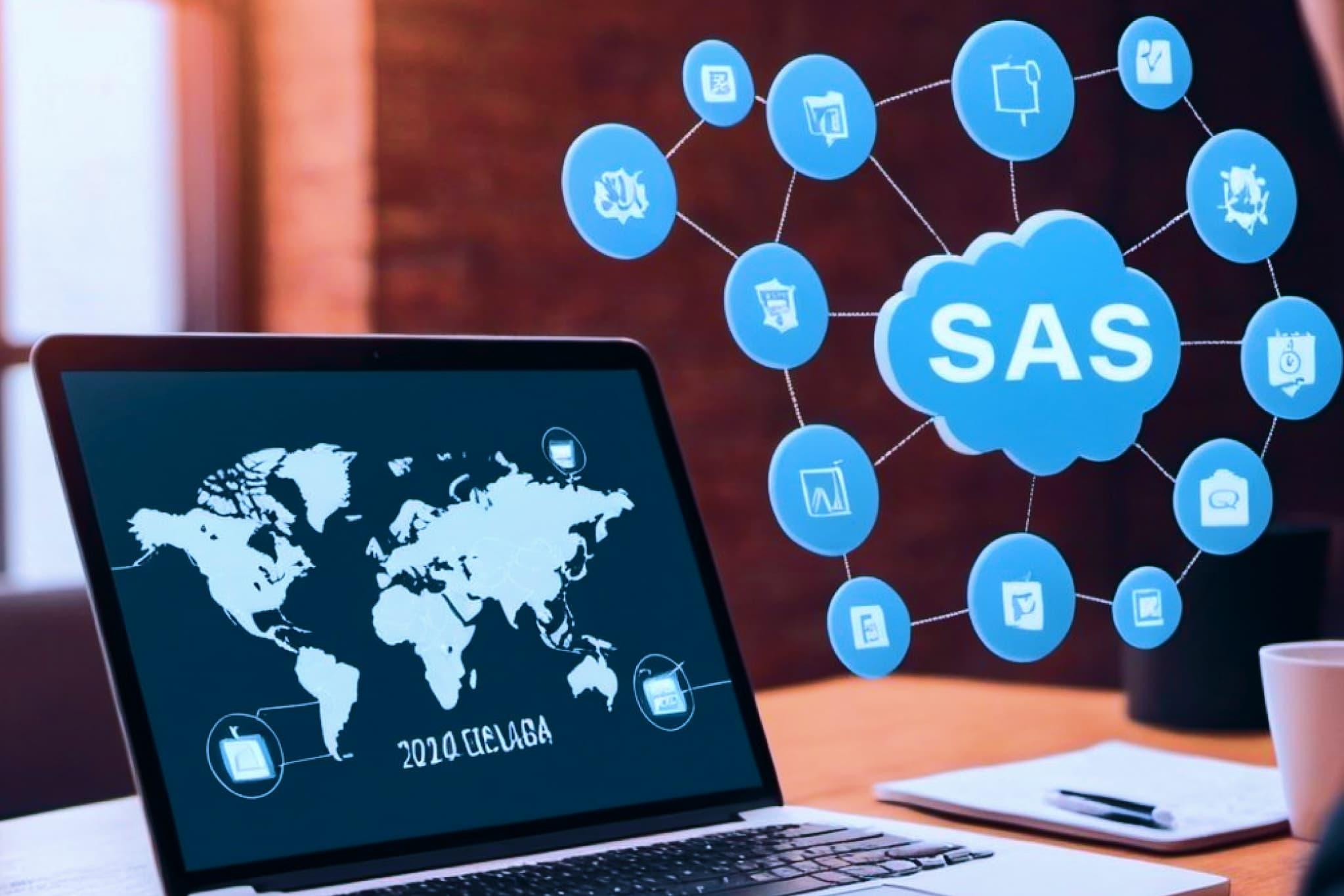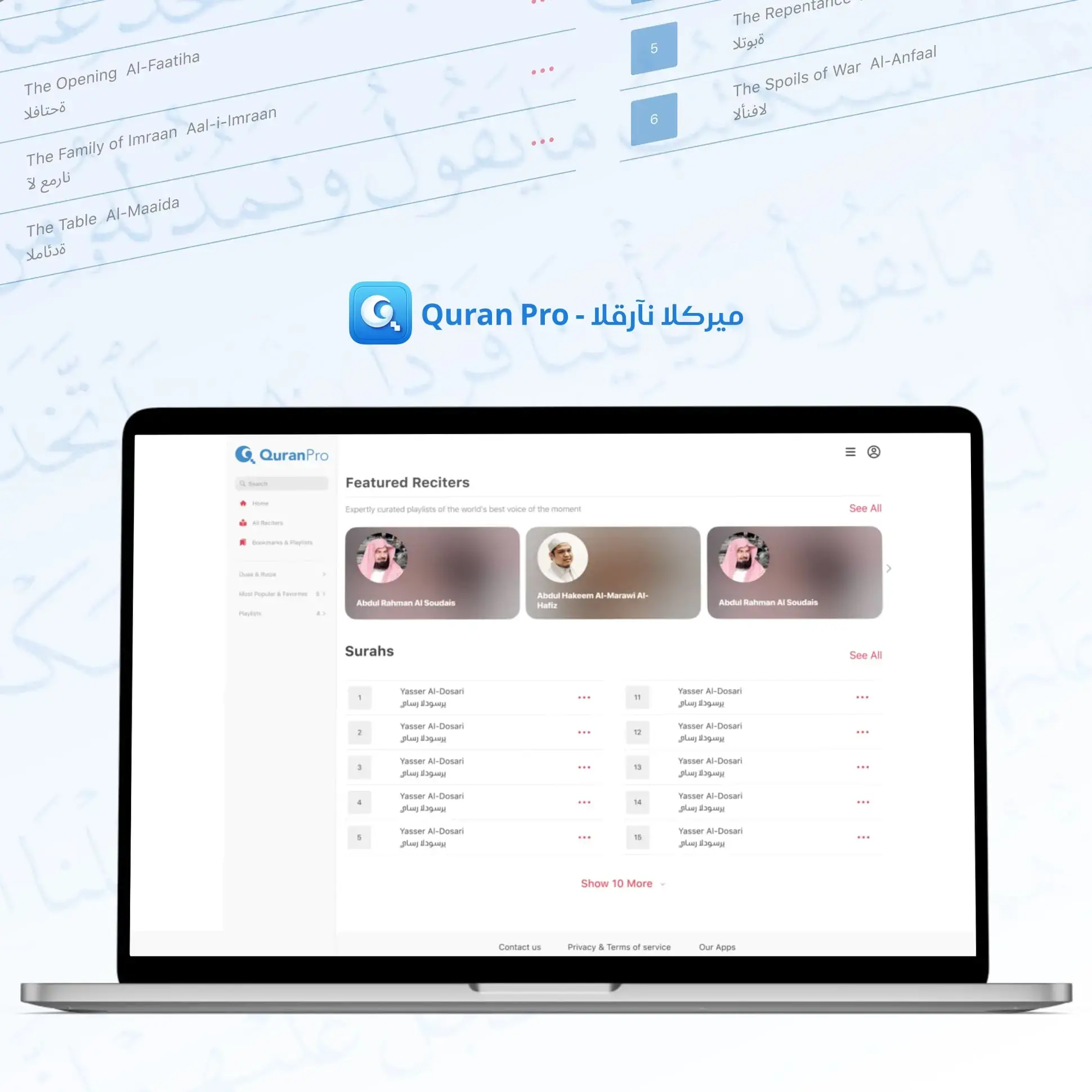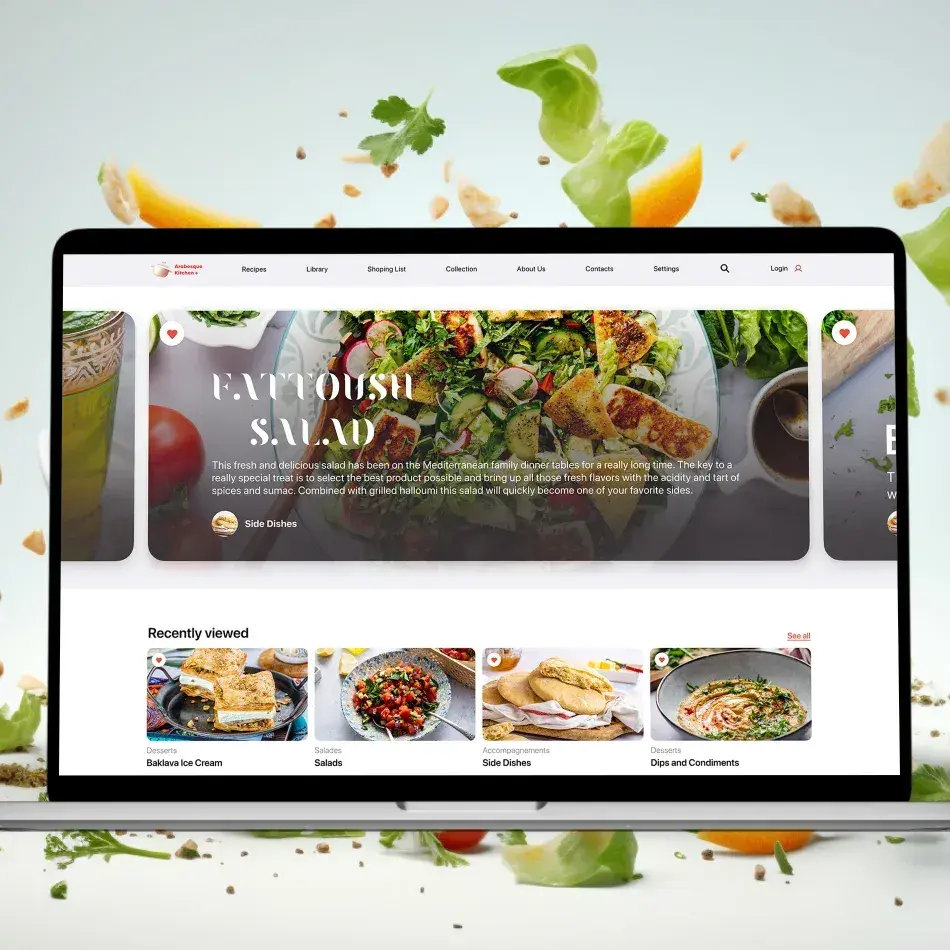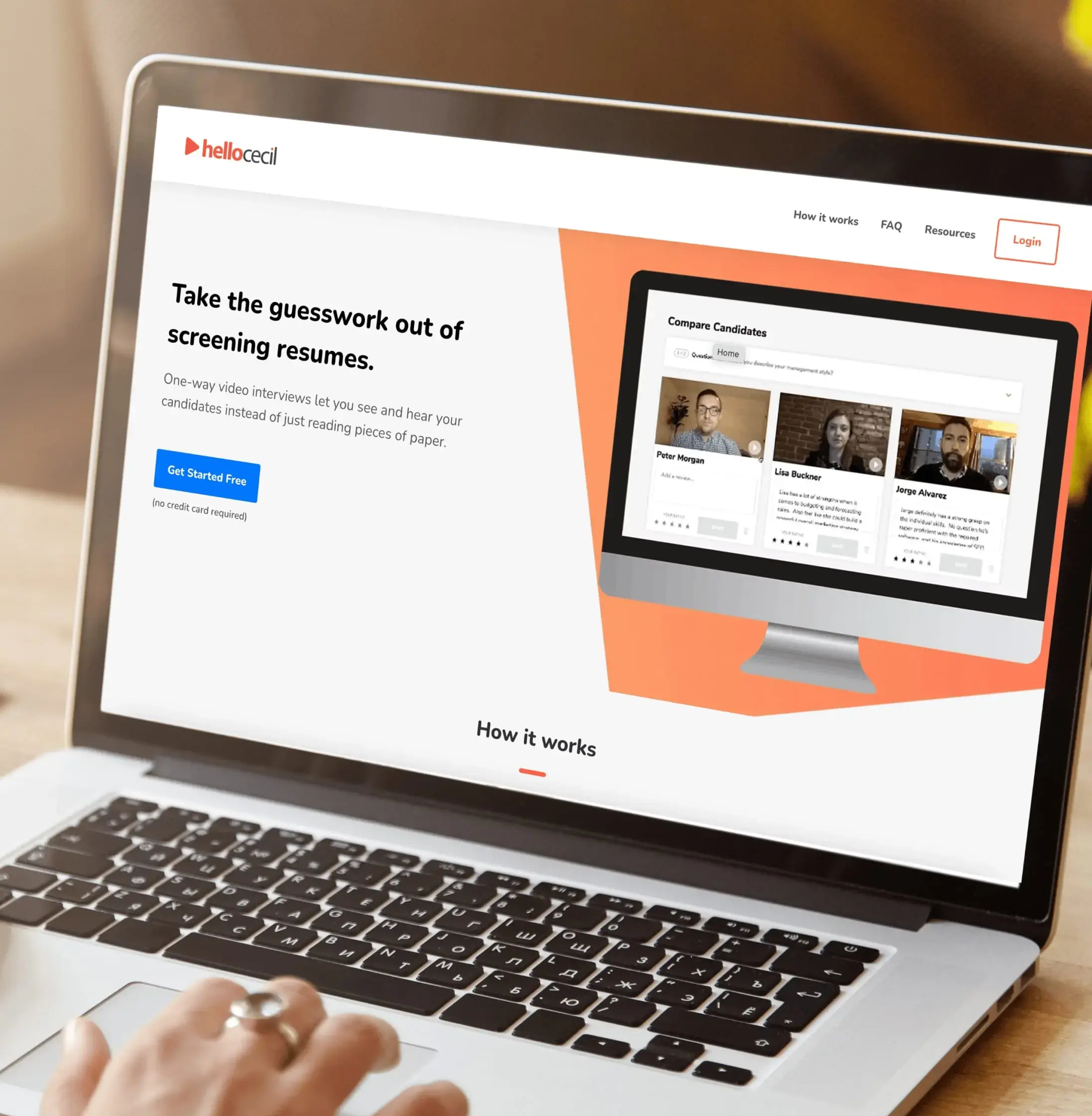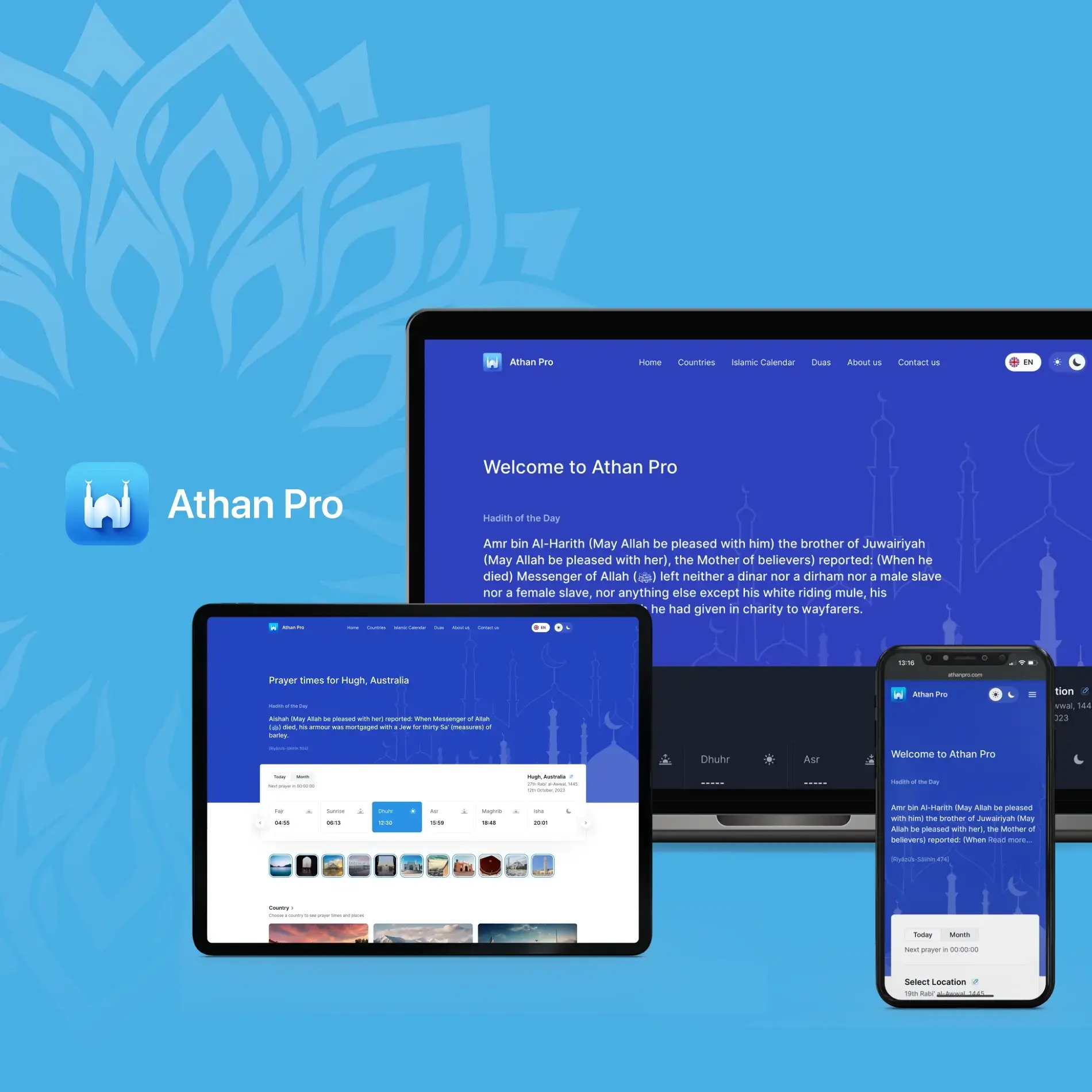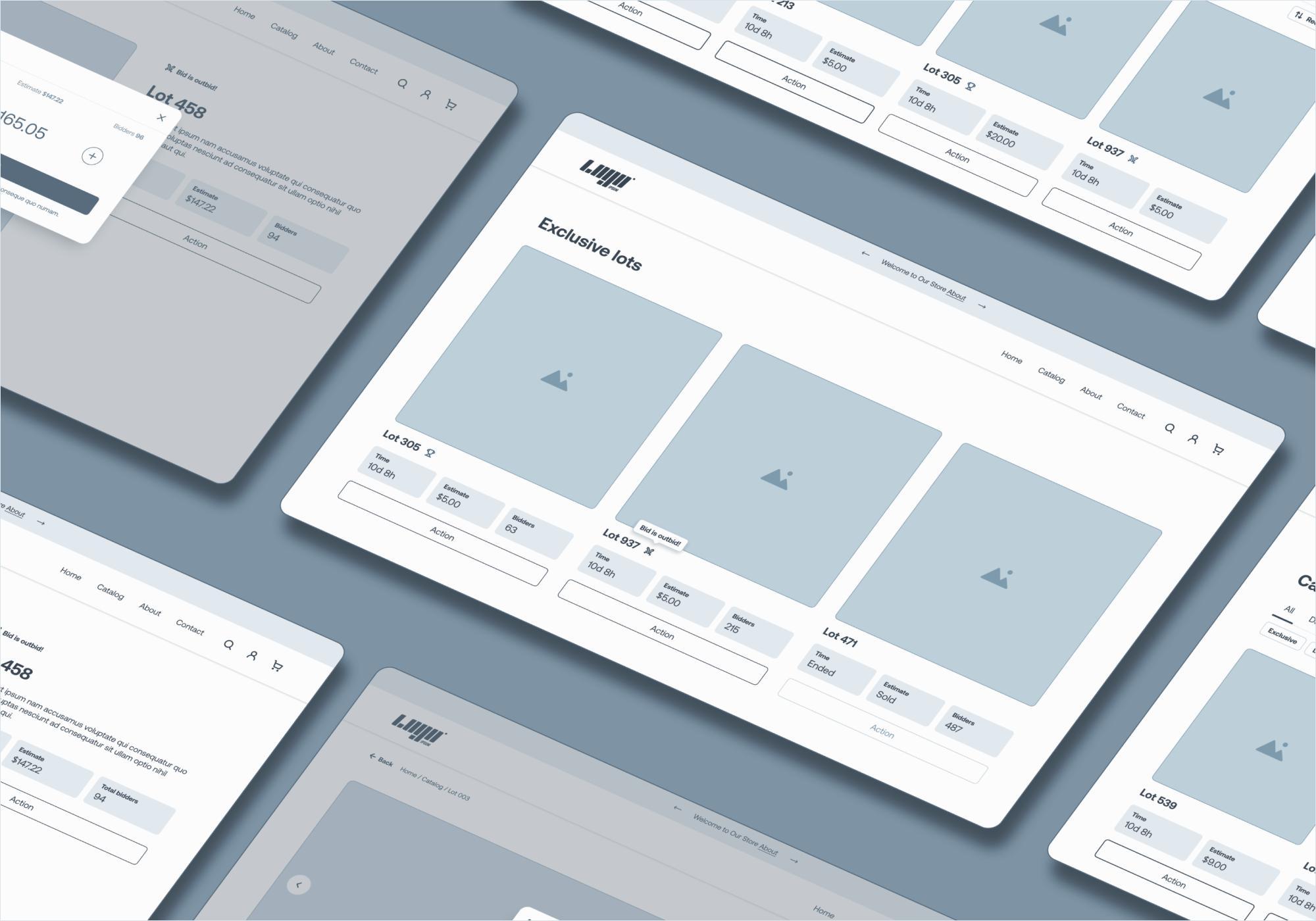Cloud solutions have been vital for businesses worldwide for a while now. Yet, there is still some confusion around SaaS development. JetBase has been in the market for a decade, and we have heard all the questions about SaaS. Is it more secure? Is it cheaper? How to approach it properly?
Well, in today’s deep dive into SaaS, we will share all there is to know about it. We’ll outline the uniqueness of SaaS solutions, highlight their benefits, talk about the stages of development, and help you find the right team for the job. Our portfolio is chock-full of SaaS projects and we’ll share these examples as a practical showcase of what makes SaaS so powerful and modern.
By the end of this guide, you will fully understand why you need to build a SaaS app, how to do it properly, and who to recruit for that task. We’ll start with the basics.
What is a SaaS Application?
SaaS stands for Software as a Service, meaning any solutions in this category are sold on a subscription basis. Simply put, it turns a tangible product into a service you render monthly to your clients. However, that’s just the surface layer. On the inside, SaaS development is distinguished by the fact that it relies on cloud infrastructure.
Using the cloud means SaaS solutions are always available, regardless of a client’s business or location. It also brings a range of other benefits that we will cover below. For now, though, these are the two defining features of SaaS: cloud infrastructure and a subscription-based model. Those two set it apart from regular software, though it’s not the end of their differences.
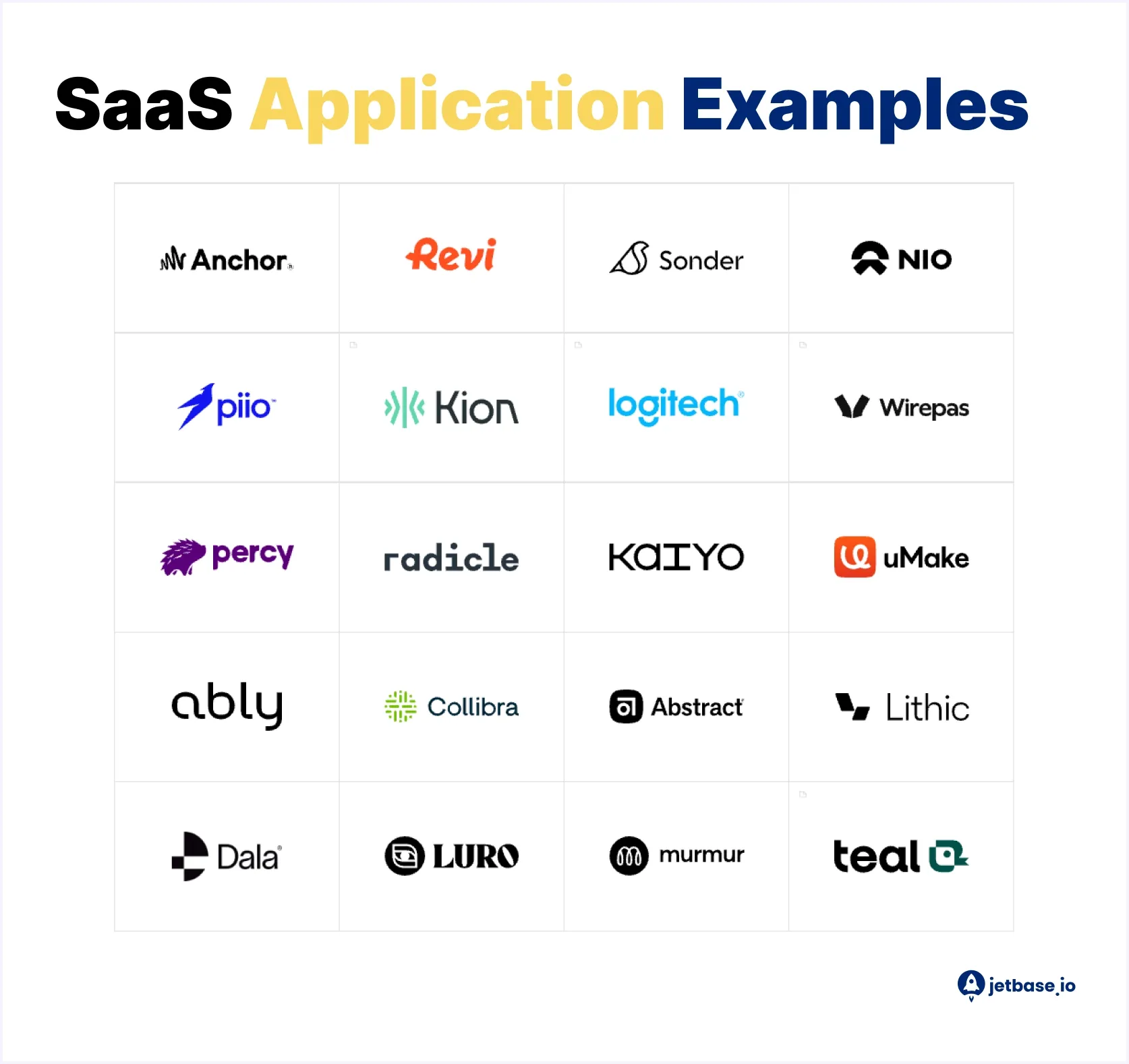
SaaS vs. Traditional Software: Key Differences
In this section, we will focus on what separates SaaS application development from regular solutions. In a way, these things bring value to SaaS and make it worth the work. For example, SaaS solutions require practically no effort from the end-user to run. The provider handles setup, updates, and bug fixing.
Then there’s the actual architecture of the applications. SaaS solutions rely entirely on the cloud, meaning every single element of the app is ultimately controlled by its provider. Thanks to that, clients don’t need to provide their own servers or pay for running the application. Technically speaking, that cost is baked into the price of SaaS solutions.
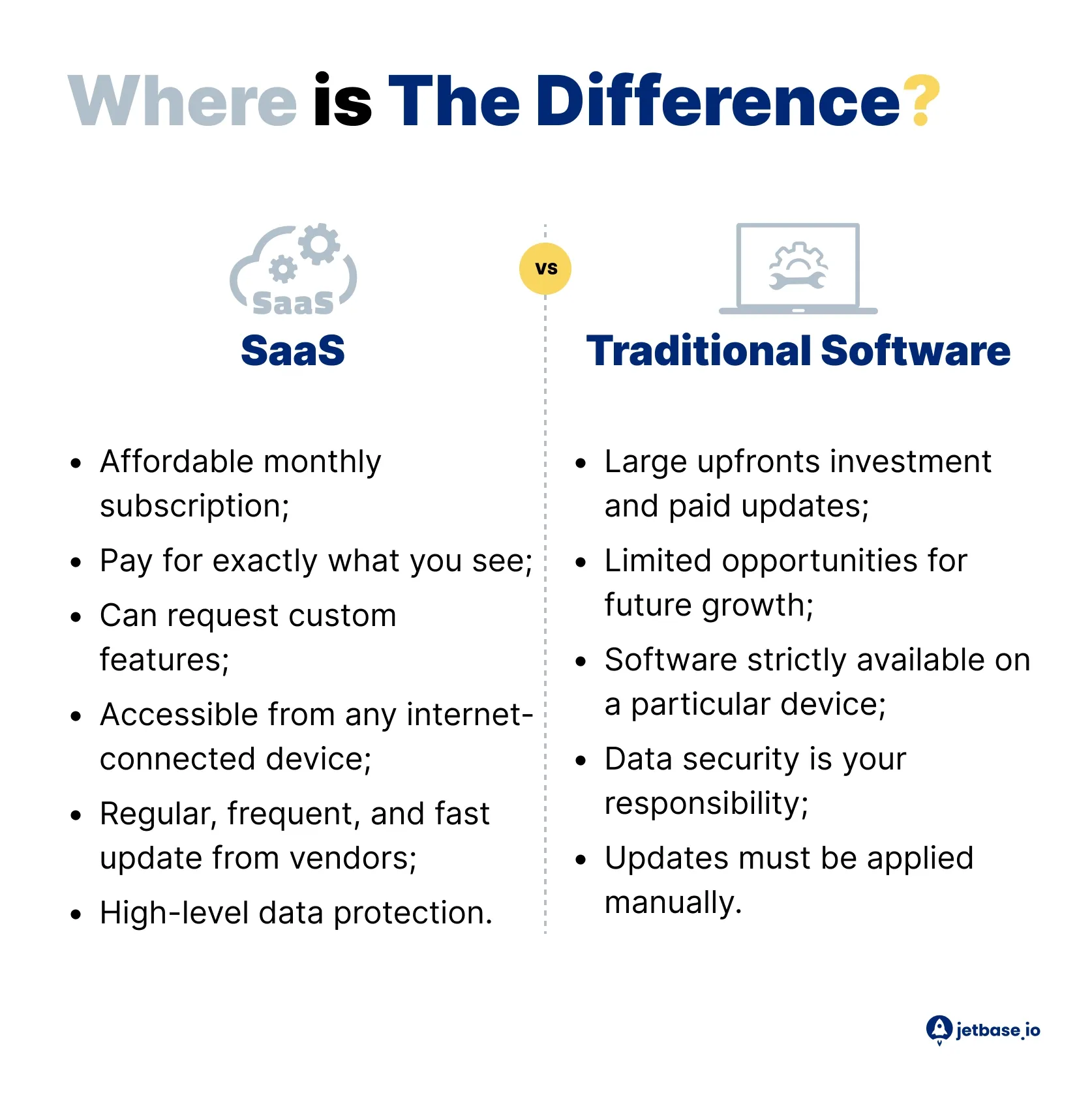
It’s also important to remember that, with the ownership of the cloud, the service provider also owns the data. While this used to raise concerns during the early stages of SaaS adoption, nowadays, it’s clear that following the best security practices eliminates any risk. Though the client’s data won’t technically be in their hands, it will still be accessible only to them.
There is also the question of resource use, as all SaaS platform development is done for multi-tenant architecture. That means many users will be using the app at once and sharing its resources. Without a skilled team, the app may run into issues with bandwidth and processing simultaneous operations, should the concurrent user rate get too high.
Thankfully, you can mitigate it by working with professionals like JetBase. Besides, the differences between traditional and SaaS apps don’t stop there. Let’s proceed to something quite positive.
Key Advantages of SaaS Application Development
We outlined the factors that set SaaS apps apart from regular software, but it’s not just about how it stands out. The real difference makers are the benefits that SaaS brings to the table. In this section, we will go over the core advantages of choosing SaaS over traditional solutions. This will hopefully illustrate why SaaS software development is worth the effort.
Scalability
The cloud nature of SaaS solutions makes it much easier to adapt them to one’s fluctuating needs. Depending on the number of concurrent users and resource load, you can easily scale up and down to match the right level. That way, you’re not wasting any processing power and aren’t underperforming in critical moments when you’re most dependent on the software.
While it’s possible to build a certain level of flexibility into a regular application, they simply aren’t designed for the same level of adaptability. This leaves SaaS apps looking like the more advanced of the two approaches, and for good reason.
Cost Efficiency
The resource scaling we mentioned also means savings, as you won’t be spending extra on resource use or future upgrades. SaaS is a forward-thinking field, and this software stays relevant longer, making any investment into it better in the long run. This, in turn, makes it popular in the market, letting you build a wider base of customers.
Plus, SaaS solutions can have very flexible pricing, making them viable for any business. Even the smallest startup can work with SaaS without disrupting its budget and get the same quality as everyone else.
Setup Time
SaaS solutions are easy to work with as they require barely any effort to get running. Plus, they can run on any device thanks to their cloud nature. SaaS app development focuses on making this software viable for everyone, requiring only an internet connection. This further raises their popularity among users and simplifies post-launch work.
Stability
Cloud solutions are indisputably more stable than regular software, as they rely on more than one server or system to run. SaaS solutions guarantee practically 100% uptime, preventing disruptions in your business. The same obviously applies to your clients, who will know they can rely on your solution at all times, building brand loyalty and reputation.
Types and Examples of Successful SaaS Applications
All the benefits we described above come together to form powerful SaaS solutions that capture the market. They cover many use cases and market segments, showing exactly what SaaS can do. We’ll try to represent that with a few key examples to give you an idea of what the SaaS market is like right now.
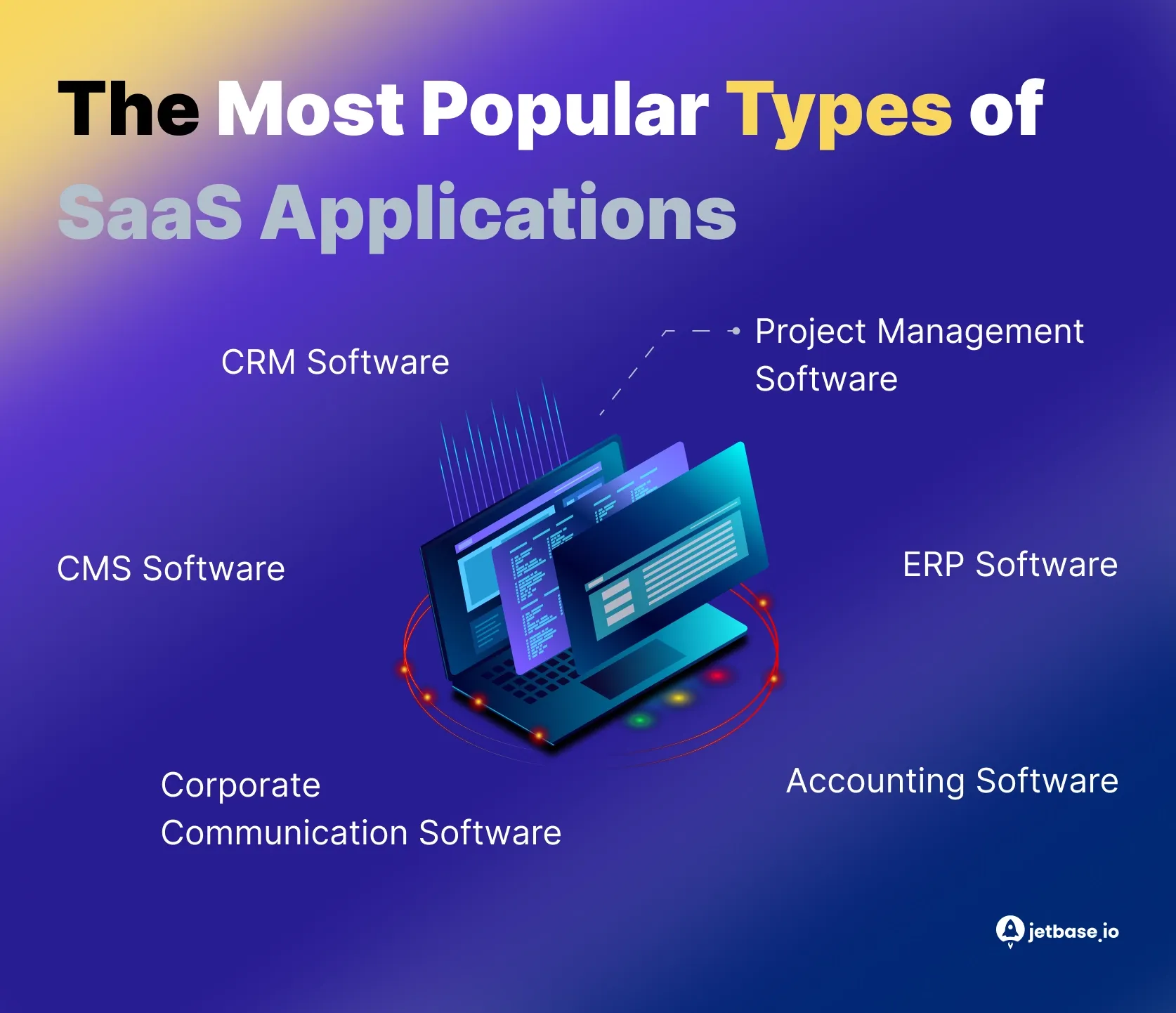
CRM Software
These B2B solutions help companies manage their customer bases by analyzing their business performance and client data. This helps them understand user behavior, track their preferences, and gain unique insight into retaining a loyal client base. CRM is one of the biggest SaaS types, with software like Salesforce and Hubspot ruling this niche, the former capturing nearly a quarter of it.
CMS Software
Content management systems almost literally keep the web running, as tools like WordPress have helped create millions of websites. These solutions let even a complete newbie create their own site from scratch. CMSs are also useful for businesses, as proven by Shopify, which is undoubtedly a mainstay in the e-commerce world.
ERP Software
Enterprise resource planning solutions are another business-oriented type. They automate a lot of day-to-day operations, such as inventory management, scheduling shipments, and even CRM. These are quite robust suites and the top solutions of this type are also known around the world. It’s no surprise, as Oracle and SAP are used by prominent companies and the ERP market generated $44 billion in revenue in 2023.
Project Management Software
There isn’t much we need to explain about this type. After all, business mainstays like Trello and Jira don’t need much introduction. Any major corporation has used them or a similar solution to structure its work and track employees’ progress. Not all project management solutions are SaaS, but the market leaders certainly are.
Corporate Communication Software
SaaS is the perfect choice for messaging solutions, as the cloud infrastructure helps preserve message history between devices. The same goes for video calling applications, as the cloud offers much-needed stability and scalability. That’s why software like Slack and Microsoft Teams have taken over corporate communications.
Accounting Software
This type also includes billing solutions and other finance management apps. This software has gained popularity because of its excellent regulatory compliance, automation of regular payments, and in-depth analytics. The latter can be boosted via AI processing to find ways to cut costs. As a result, these solutions genuinely help strengthen companies’ finances and speed up the work of accounting departments.
Planning Your SaaS Development Journey: Step-by-Step
Now that we have covered the benefits of SaaS application development and the popular types of SaaS solutions, it’s time to get to the main event. Here’s how you should approach the actual development process if you want a smooth journey and a great result.
Research the Market
It’s vital to start with an in-depth analysis of the current situation. Understanding the market’s needs and wants helps you assess how profitable the project can be. Plus, there needs to be a clear sign that there is room in this competitive industry for another solution.

Doing your due diligence also helps later on when drawing up the feature set and picking technologies. It gives you a chance to account for the latest trends and avoid using something that’s already way past its prime.
Define the Business Model
Once you have a good grasp of the situation in the market, as well as your software’s specifics, you should be able to choose the right way to monetize. Depending on the type of solution you’re making, it can be smart to do the regular subscription fee or a per-use payment system. The latter helps make the software accessible to smaller companies while you get respectable payouts from larger enterprises.
It’s also important to decide if you want flat pricing or a tiered system, where certain features are paywalled. Some companies also opt for the “freemium” model, which can help a new piece of software gain some popularity.
Design Engaging UX/UI
There’s a fine balance to strike between making your UI intuitive and simple yet unique and memorable. Branding and design are vital if you want the product to catch on, same as UX. Helping users navigate your software easily is the best way to make it truly accessible and, thus, more successful.
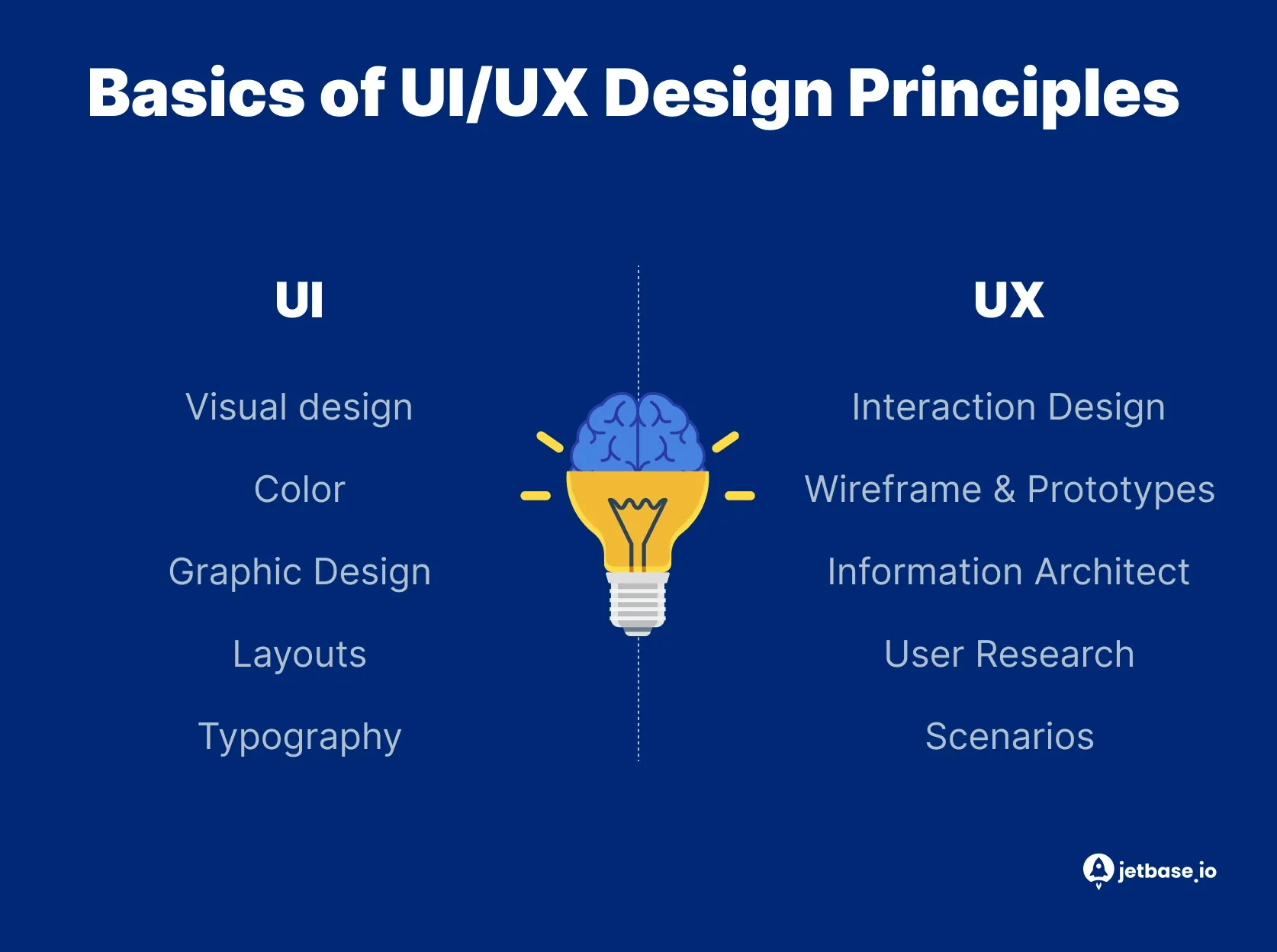
Select the Perfect Tech Stack
When we say “perfect,” we mean, of course, a tech stack that’s perfect for your particular needs. Some may prioritize scalability, some may base their choice on the dev team’s specialization. We’d advise choosing based solely on what’s best for the product and will make it more competitive.
There are plenty of options out there, depending on what you need. For databases, you can consider MySQL or PostgreSQL, while Vue.js or React will serve your front end. It’s also important to cover mobile as well, as mobile apps are pretty much a must these days. For these, you can use Flutter or Kotlin, or a slew of other options.
Develop, Secure, Comply
As the engineers work on the software, remember what’s important: your product should be high-quality and secure. That’s why JetBase likes to emphasize quality assurance in our projects, as well as focus on proper encryption standards and security practices. The latter include two-factor identification and tiered zero-trust access models.
As a result, you can be sure that your solution will be competitive even against the best in the market and keep your clients’ data secure. That matters a lot in today’s world, where a single data breach can cost a company millions.
Deploy, Gather Feedback, Iterate
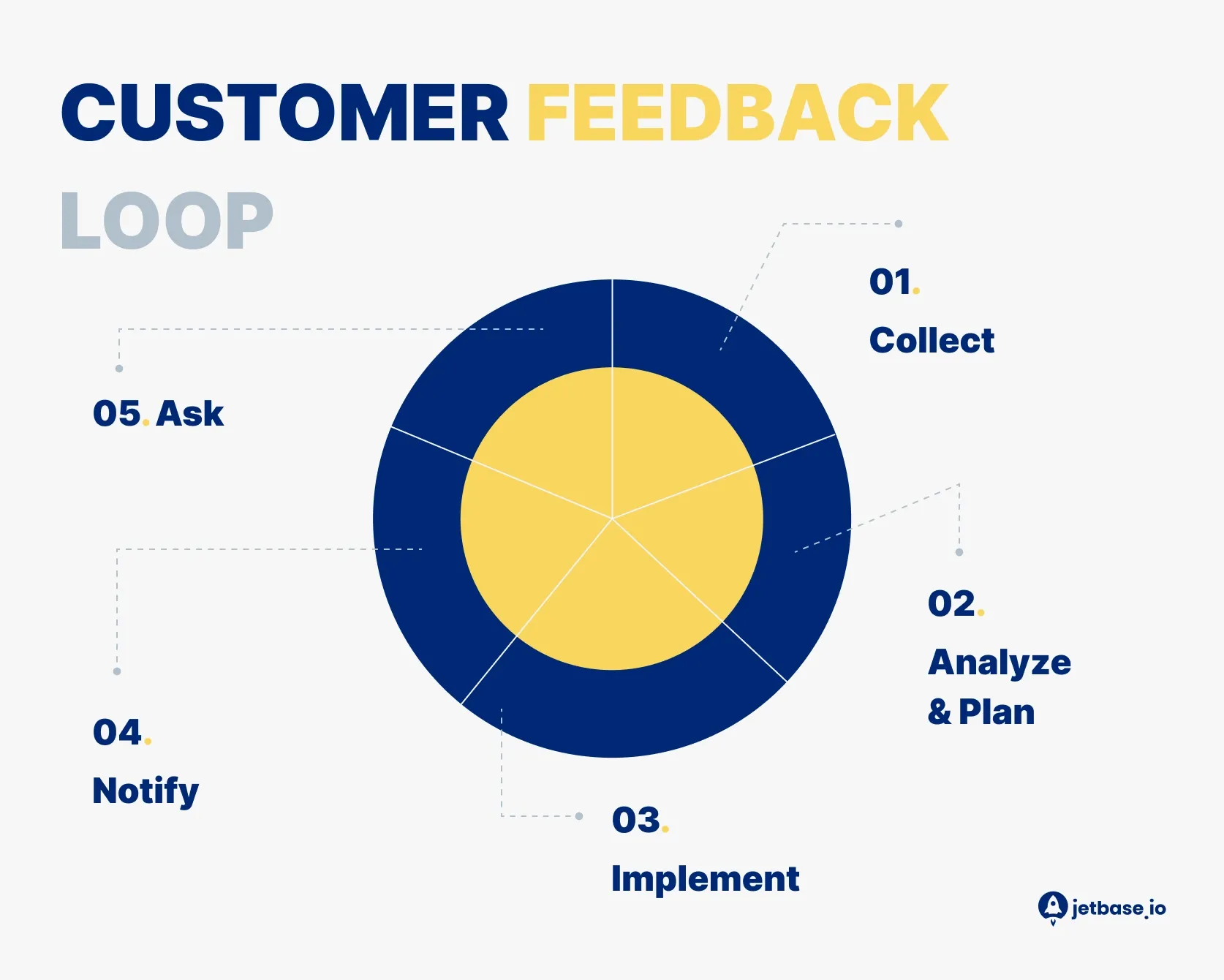
Once development is done, you can deploy the product and serve it up to the customers. At this point, it’s crucial to collect as much analytical data as possible, as well as customer opinions. These will steer future development and updates, as you can quickly understand what’s lacking or imperfect. As a result, you can refine your software and create a truly valuable product that will dominate the market for years to come.
Analytics and SaaS KPIs to Track
After your SaaS product launches into the market you must perform performance tracking on a daily basis. Without measurement you cannot achieve any kind of improvement.
Key SaaS KPIs:
- The number of users who discontinue their subscription constitutes the Customer Churn Rate
- Monthly Recurring Revenue (MRR) – predictable revenue from subscriptions
- Customer Acquisition Cost (CAC) vs. Customer Lifetime Value (LTV)
- Feature Adoption Rate indicates the actual usage of your product by users
- The Net Promoter Score tracks user willingness to spread recommendations about your service
The analytics tools Mixpanel, Segment or Amplitude enable businesses to discover areas where UX performance weakens and make product development more precise.
Designing Your SaaS Architecture: Best Practices
In addition to closely following the development steps, there are a few more things you can do to guarantee success. These are the optimal tactics in SaaS app development and will help you design a modern, polished app.
Consider Microservices
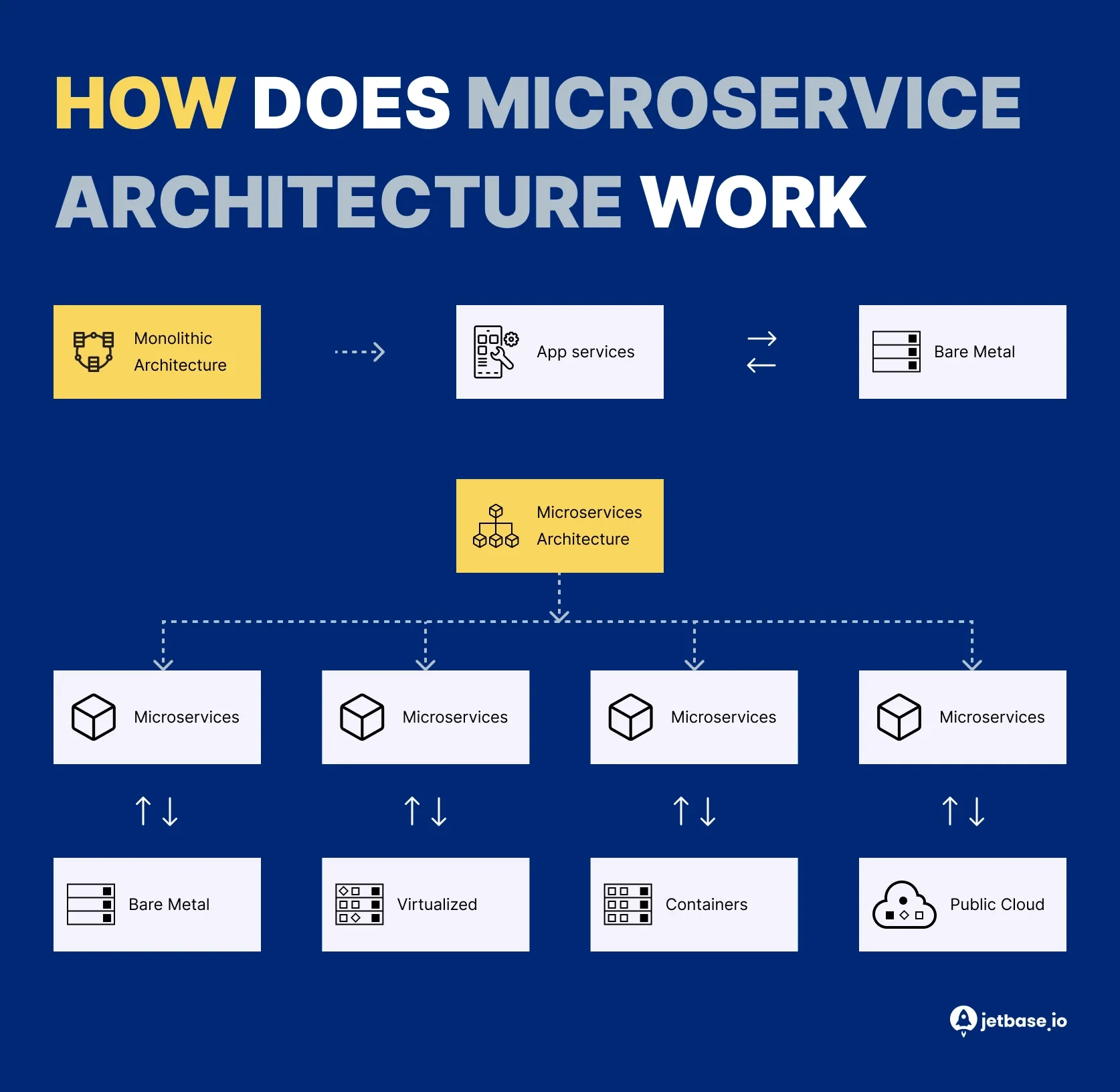
For a long time, the monolithic approach to SaaS architecture was king. However, nowadays, more and more developers opt for microservices. They are great for scalability and make it easier to iterate the software in the future. Since microservices make each part of the application independent from others, it’s possible to test and deploy patches without disrupting the software.
Rely on a Multi-Tenant Structure
This approach is great because it allows multiple clients to share your software’s resources without conflict. It distributes the load evenly and allows simultaneous connections from many users. This can be done with one database or multiple, with the latter option being optimal for scaling.
Utilize Standard APIs
While it’s important to provide unique value to the customers, you also want to give them the confidence that they’ll be able to switch products if they wish to. That entails, among other things, using common APIs. Thanks to them, customers will be able to switch to another system and sync their data and processes easily.
Moreover, using standard APIs makes it easier to integrate your product with other tools and services. This opens up new functionality and increases the likelihood that customers will use your solution long-term. Plus, standardizing your software ensures that the way it processes data complies with industry regulations.
SaaS Compliance and Regulations: What You Need to Know
Production of SaaS products needs thorough compliance checks against both specific industry regulations and regional rules. Non-compliance with these standards will lead to both financial penalties and clients withdrawing their trust.
Your product requirements depend heavily on your selected market sector together with your chosen industry.
When dealing with EU users under GDPR you need to protect their data privacy protect their right to delete information and provide clear notifications about how data will be used.
SOC 2 functions as an essential requirement for SaaS enterprises that store sensitive data to demonstrate secure and dependable system operations.
Your application needs to fulfill rigid privacy and security protocols outlined by HIPAA whenever it deals with protected health information (PHI).
PCI DSS requirements apply to those who handle credit card transactions.
Compliance evaluation should start during design because retrofitting solutions becomes expensive with many complications.
SaaS Development Challenges
Knowing the potential pitfalls that developers face will help you avoid them. We will briefly list a few things that SaaS projects run into most often. Alongside, of course, tips on dealing with these challenges.
Integration with Ecosystems
As SaaS products should be useful for many companies by their very nature, it’s crucial to make sure your software will connect to a customer’s network without issues. As you select your tech stack and proceed with development, your team should conduct extensive tests for this very purpose. Adapt your product to a variety of devices, as well as a slew of corporate software.
Securing the Product
We already talked about the importance of security, from 2FA to data encryption. However, the challenge also lies in finding a team that can actually follow the best practices for this. Everything hinges on your product having airtight security, so make sure your developers have experience with this aspect of the work. Plus, consult a legal team on regulations that concern your software and make sure to follow them to a T.
Lack of Scalability
There’s no excuse for making a cloud-based product that doesn’t scale well, especially as that determines your project’s success. You will need to easily support a multitude of clients without ever compromising the stability of your software. Thankfully, this is easy enough to guarantee if your dev team picks the right tech stack and builds the solution with scalability in mind.
SaaS Application Development Costs
Generally speaking, the budget for SaaS applications should range from a starting point of $30,000 to $250,000 or even higher. That obviously accounts for a variety of solutions, as simpler software will cost less than a sprawling ERP system, for example.
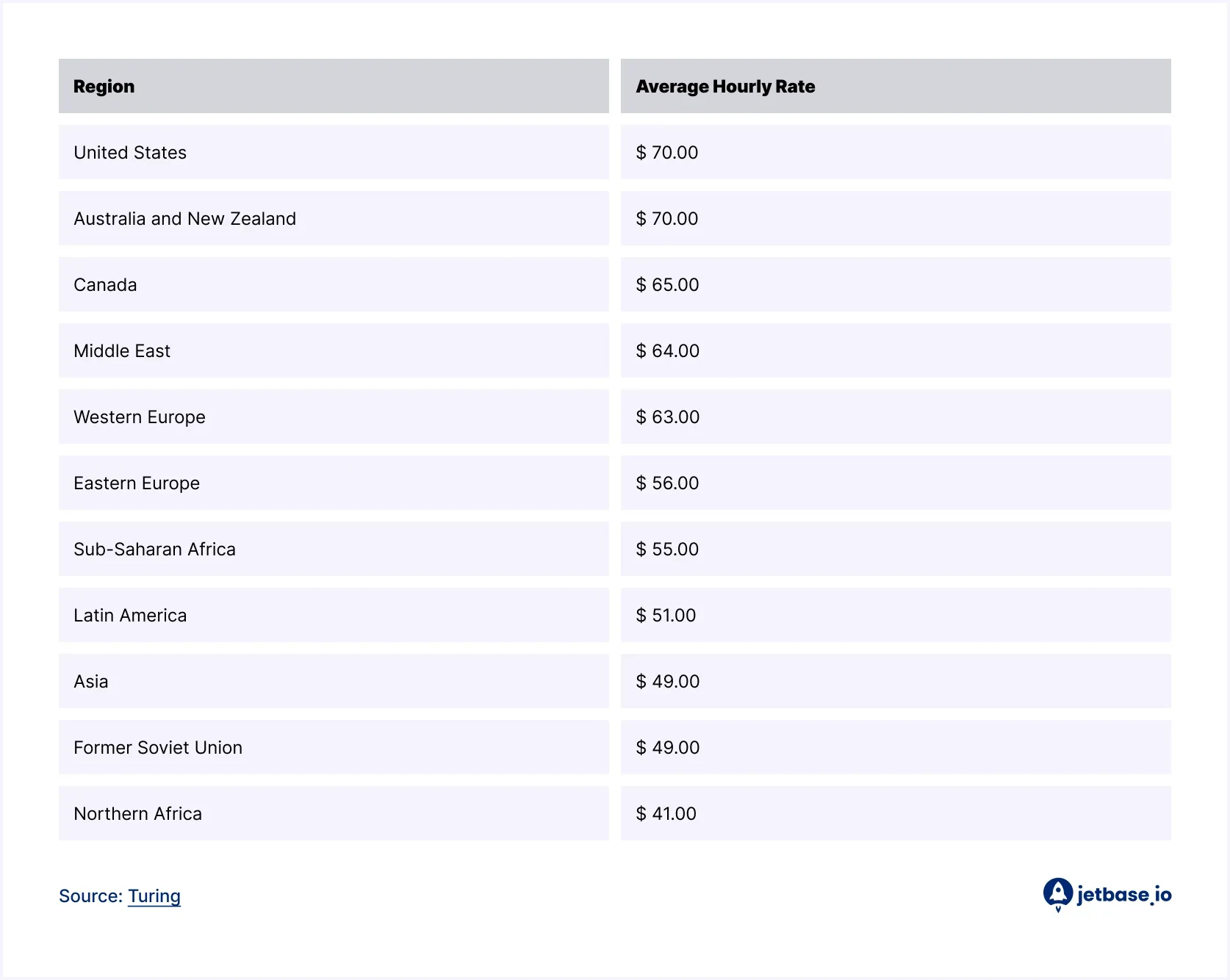
The actual price for your specific project will depend on a multitude of factors. Things like the feature set, technologies used, and team location all play a huge role in the final cost. The same goes for the type of software you’re making. Marketing and project management tools typically end up on the lower end of the price spectrum.
There is also a noticeable price hike when building a solution in-house, which entails hiring a full team, onboarding them, and likely signing long-term contracts. On the flip side, outsourcing can be a good way to manage your expenses, provided you find a good team to do the work. That shouldn’t be too difficult, as the market is saturated. However, we do have a few tips to share to help you choose a good team.
How to Find the Right Partner for SaaS Development?
In many cases, it makes sense to outsource the long and arduous SaaS development process. It can save money as you skip recruiting and onboarding team members, and relying on the expertise of a professional vendor also brings a certain level of quality. However, it’s also important to pick a good team to do the work. Here are some tips on making the right choice.
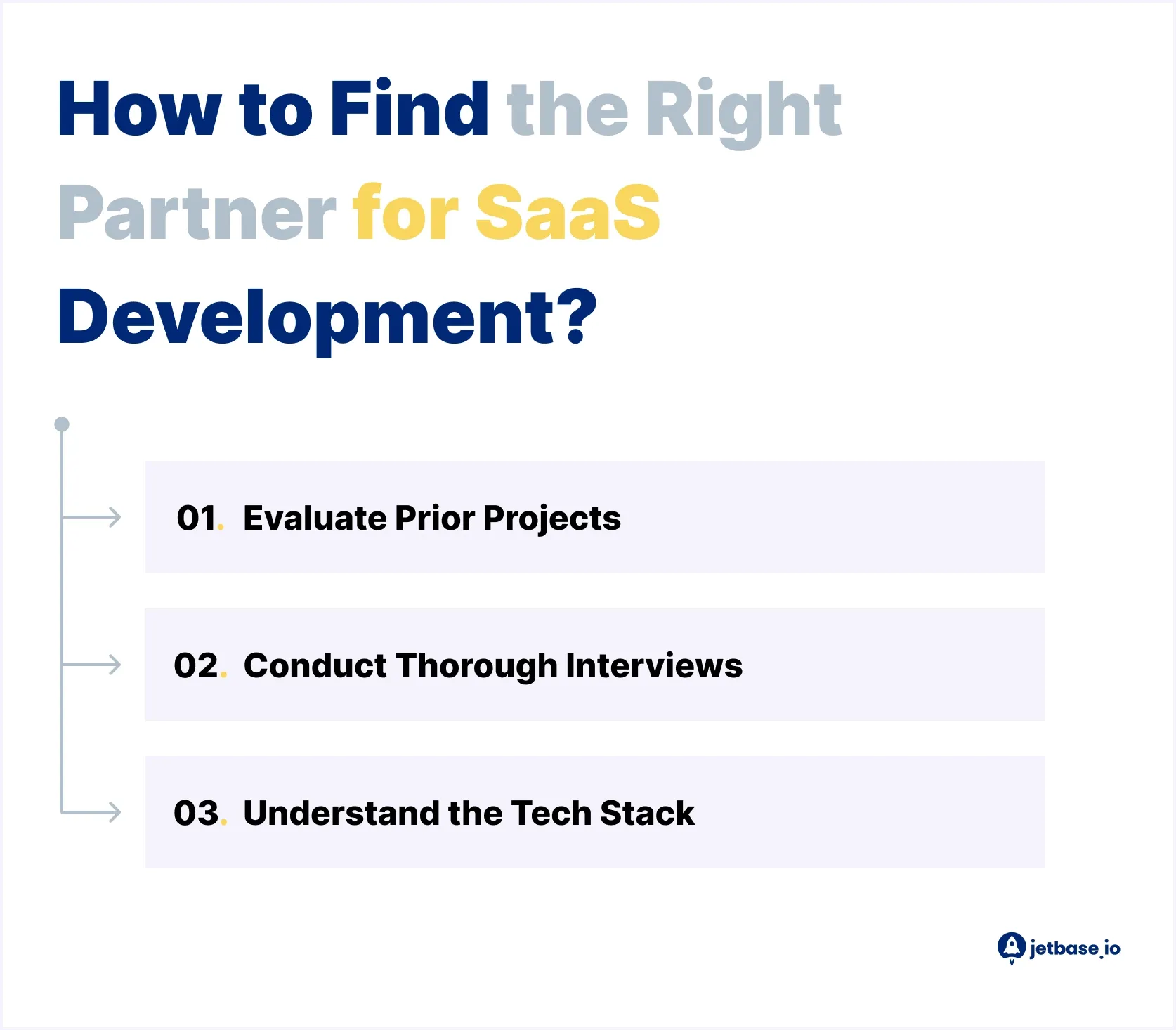
Evaluate Prior Projects
We aren’t just talking about confirming that the vendor’s portfolio is real. That should go without saying and won’t be a problem if you’re using reliable platforms. What matters just as much is measuring up their projects against yours. See if the scope matches up, the target industry, the tech stack. SaaS software developers used to small projects may not be ready for a major undertaking, the same as one suited for big enterprises isn’t the right pick for a small business.
Conduct Thorough Interviews
Once you have a shortlist of candidates, schedule calls to meet the team. Not just the managers but, ideally, some of the developers. This will help assess their soft skills, see their cohesiveness, and understand if they’re a cultural match for you. After all, outsourcing often means crossing not just borders but oceans, so it’s vital to see if you have the right “chemistry”.
Understand the Tech Stack
We already discussed the importance of choosing the right tech stack, as it influences the end product. Thus, you need a team that matches your technology needs. To put it simply, a vendor that only specializes in SaaS web application development might not have the right expertise for a sprawling ERP system, and vice versa.
Do You Need Help with SaaS Development?
We’ve demonstrated that SaaS cloud application development is a complex and time-consuming endeavor. Following the best practices of the process and keeping costs down is easier with a professional team on your side. If you want this premium level of quality, JetBase and its decade of experience are what you seek. Our team has spent years honing their skills with plenty of projects in a variety of industries. While we could spend all day listing them, we’ll focus on a few that are most relevant to the subject in hand.
Case-Study: Validate
The first example we’d like to point out is Validate, a SaaS platform for colleges and other educational institutes.
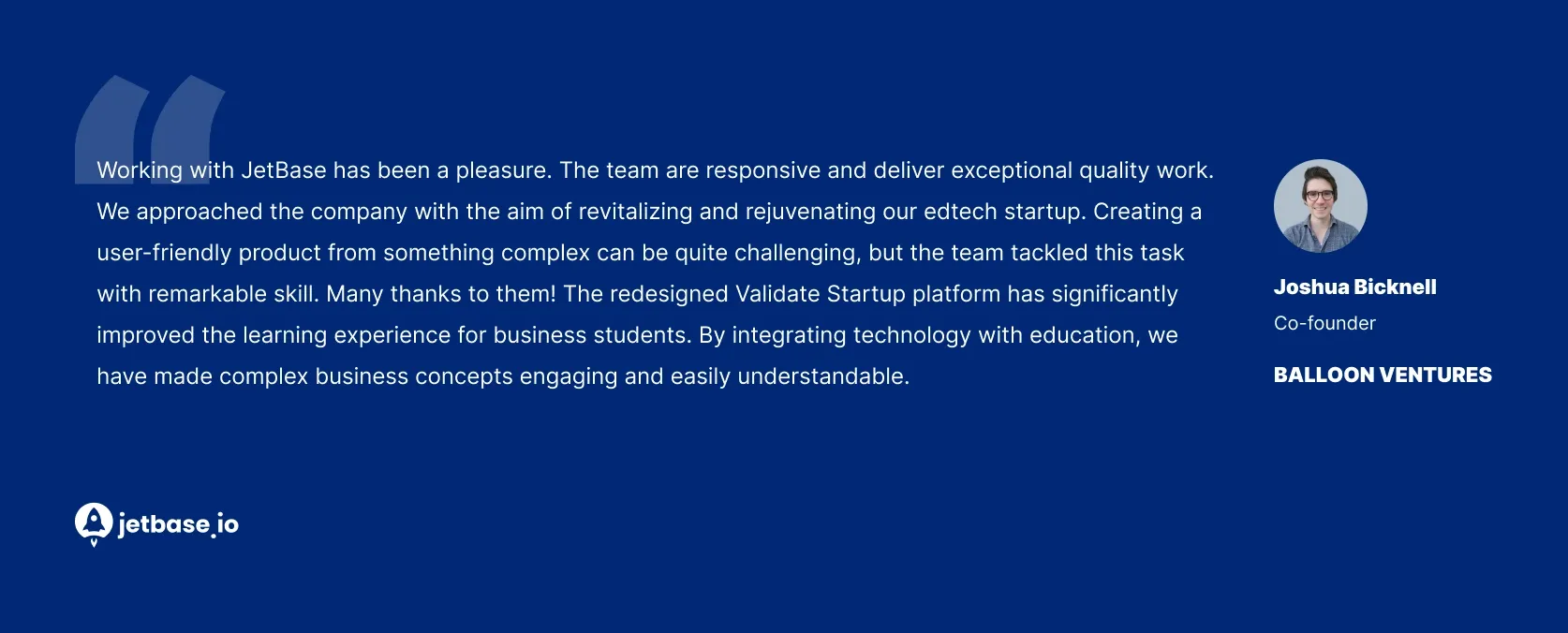
As the platform can generate and run complex business models, all with collaborative features, our task was to optimize it as much as possible. Using Rails and React, our team made a simple, intuitive interface with flexible admin tools that allow students to quickly test out their work. We also provided reporting tools so that students could efficiently show off the results and get grades for them.
Case-Study: Grapevine
Next is Grapevine, a project that reached first place on ProductHunt. This software helps connect remote teams, enabling asynchronous meetings with audio and video communication. We used AWS as the basis to ensure stability and easy scaling, making the product usable even by large teams.

JetBase’s SaaS platform developers adapted the solution to multiple platforms, including mobile and browser versions. The goal was to make a unified experience that would feel the same regardless of a user’s device. We also implemented transcription of audio and video through AssemblyAI. This helped make the app more accessible, as well as process logs to keep important information available.
Сase-Study: AdTool
Lastly, we’d like to highlight AdTool, a LinkedIn ad management system that gives users control over their budget and marketing campaigns within one solution. The service aims to get their users a 30% decrease in costs. Our team implemented metric collection and analysis, as well as smart automation, to make the management more intuitive and cut out manual busywork.
As you can see, we have worked on quite varied SaaS development projects, covering multiple industries, platforms, and use cases. The experience that JetBase gained over this decade has given us insight into new technologies and possibilities in the SaaS space.
Reach Out to Us
If you want to follow suit and get a high-quality SaaS application, don’t hesitate to get in touch. We will provide a full-stack team with a verified portfolio and consult you on the planning of the project. Our managers will handle regular check-ins and transparent communication to make sure our collaboration goes smoothly, while JetBase’s developers work to deliver quality. If a high-level SaaS app from a team of professionals is what you seek - contact us now.

